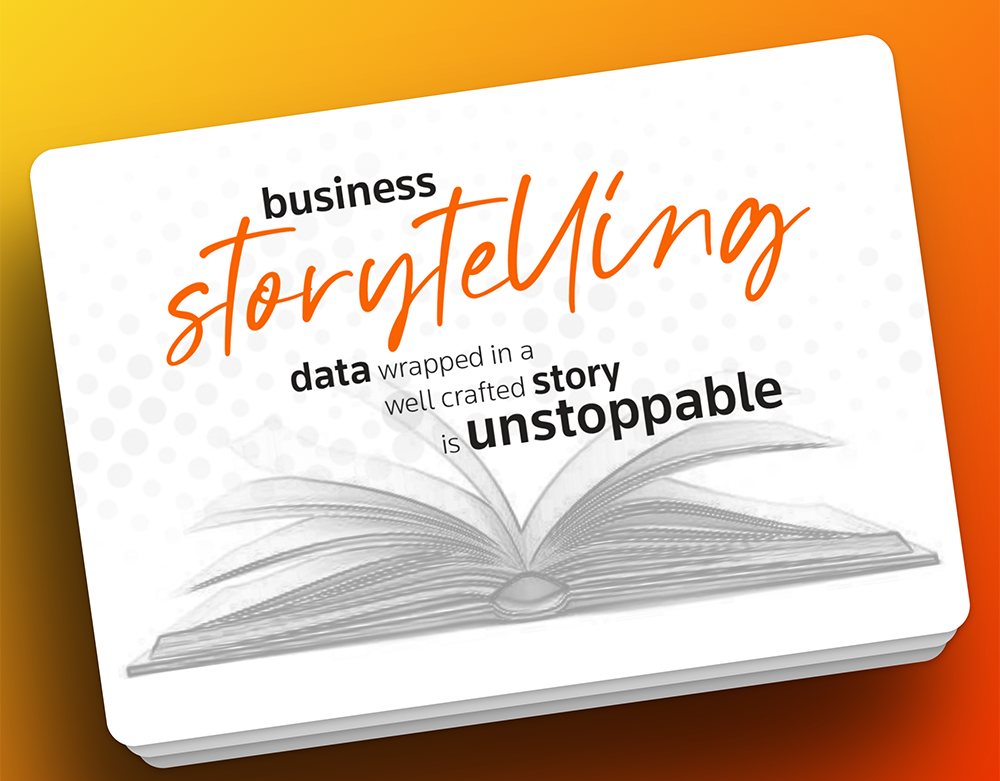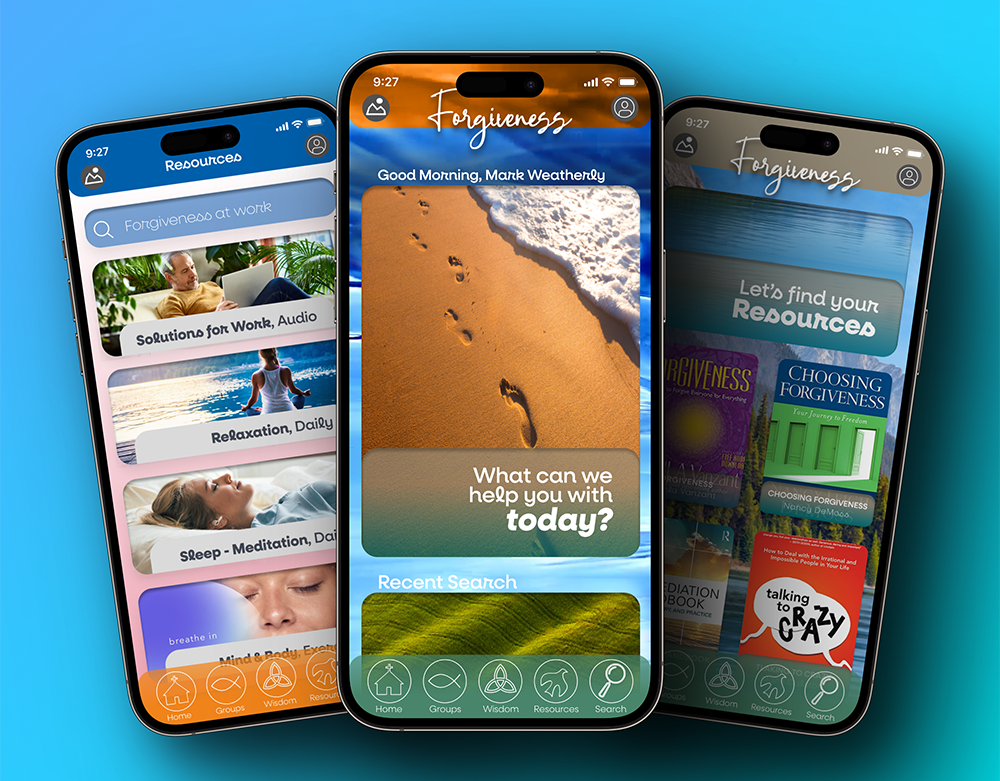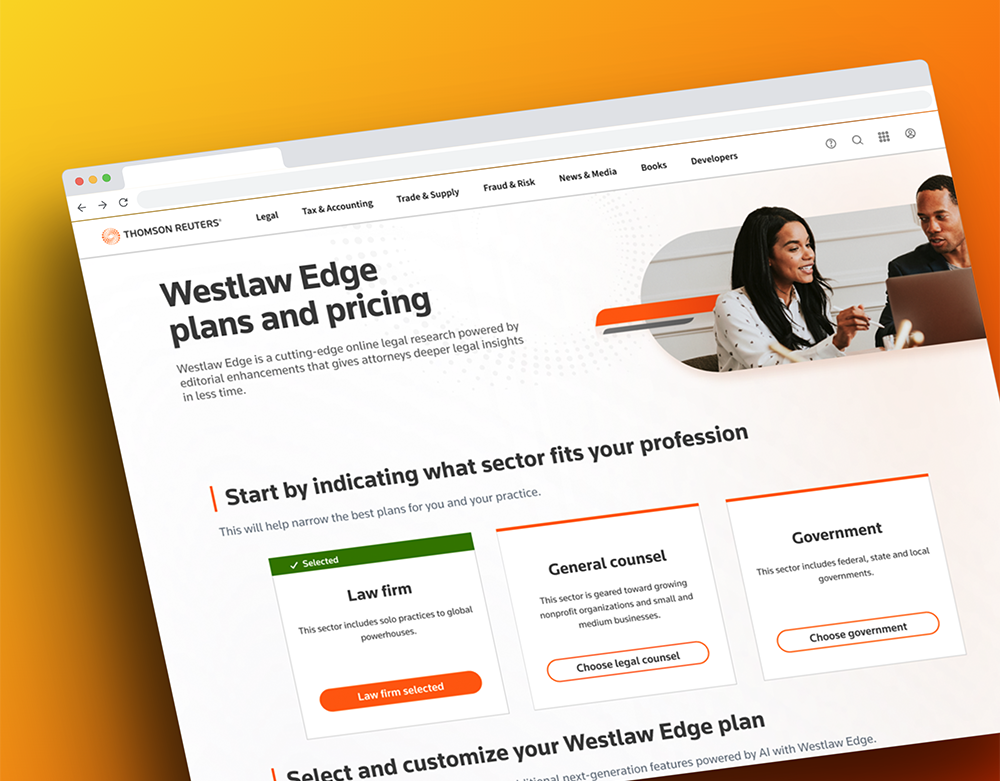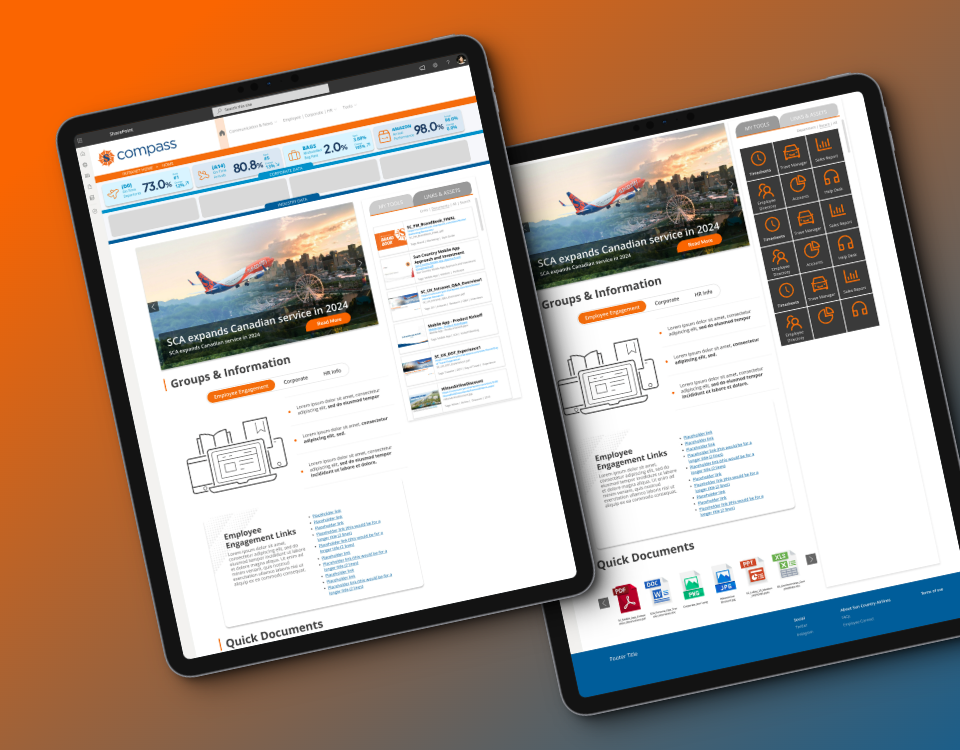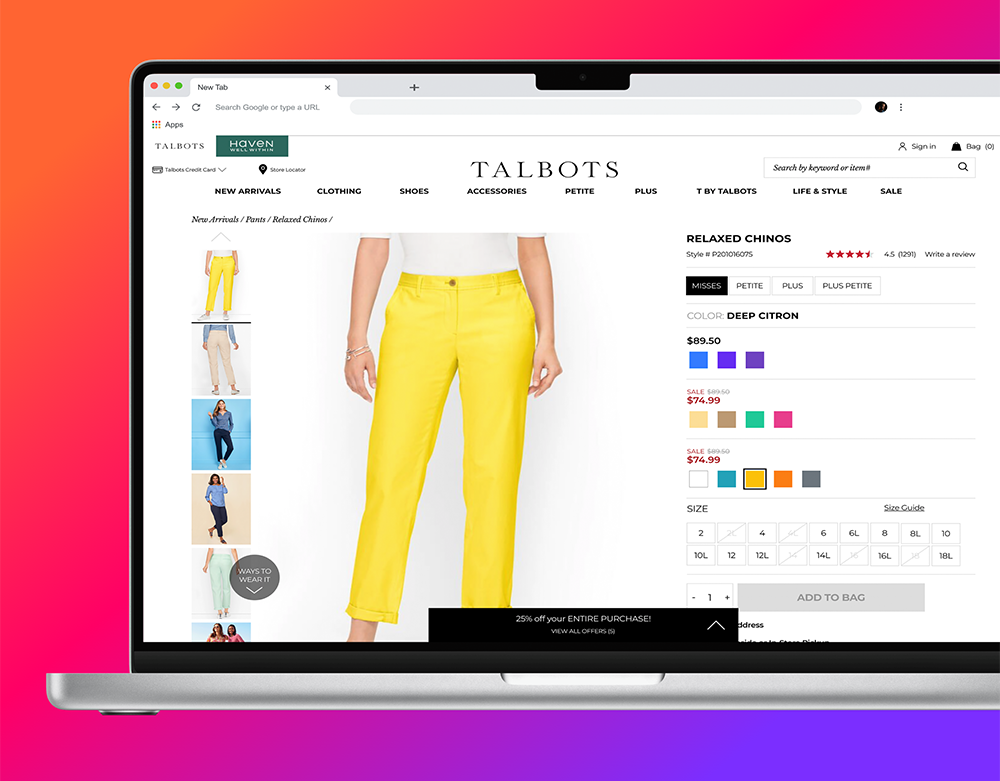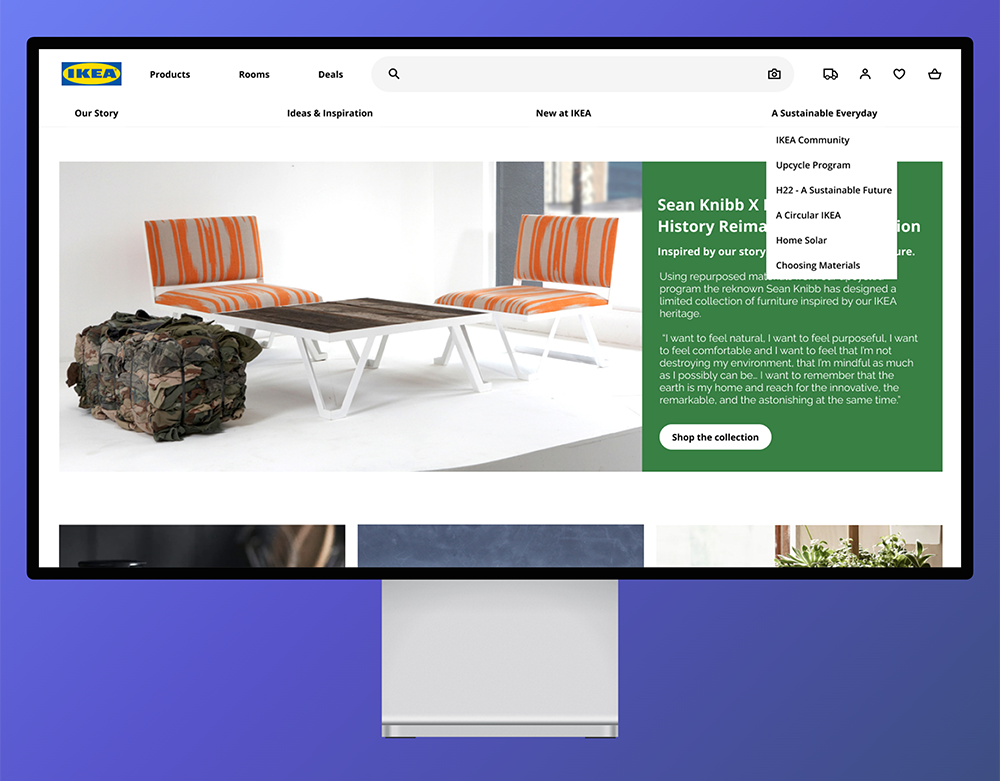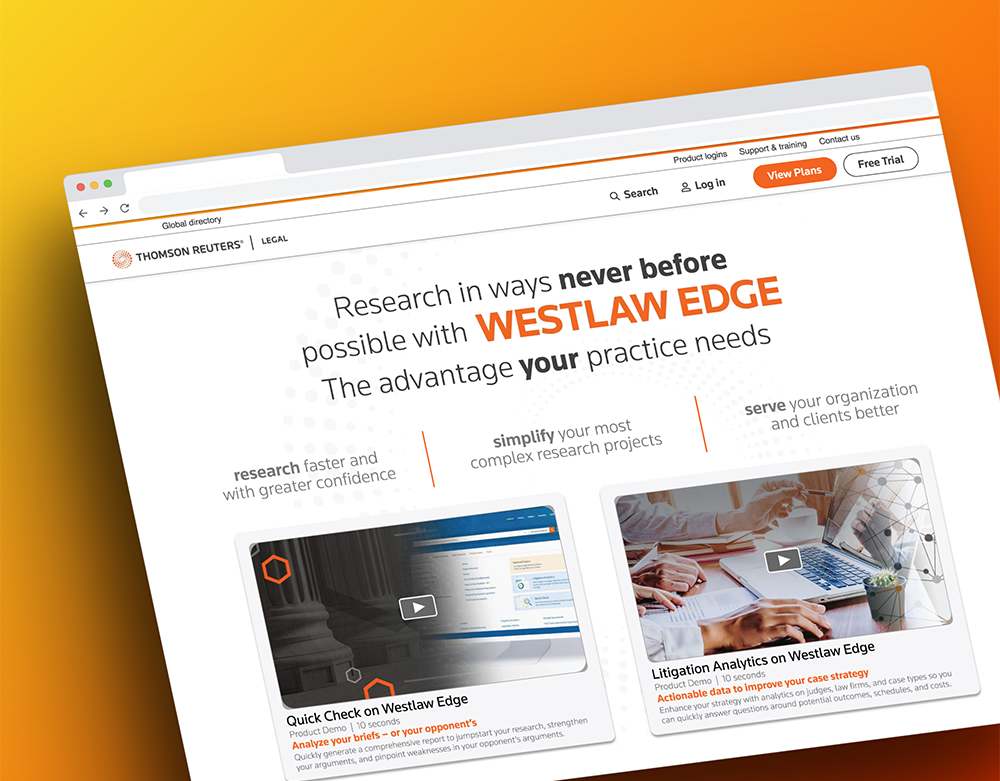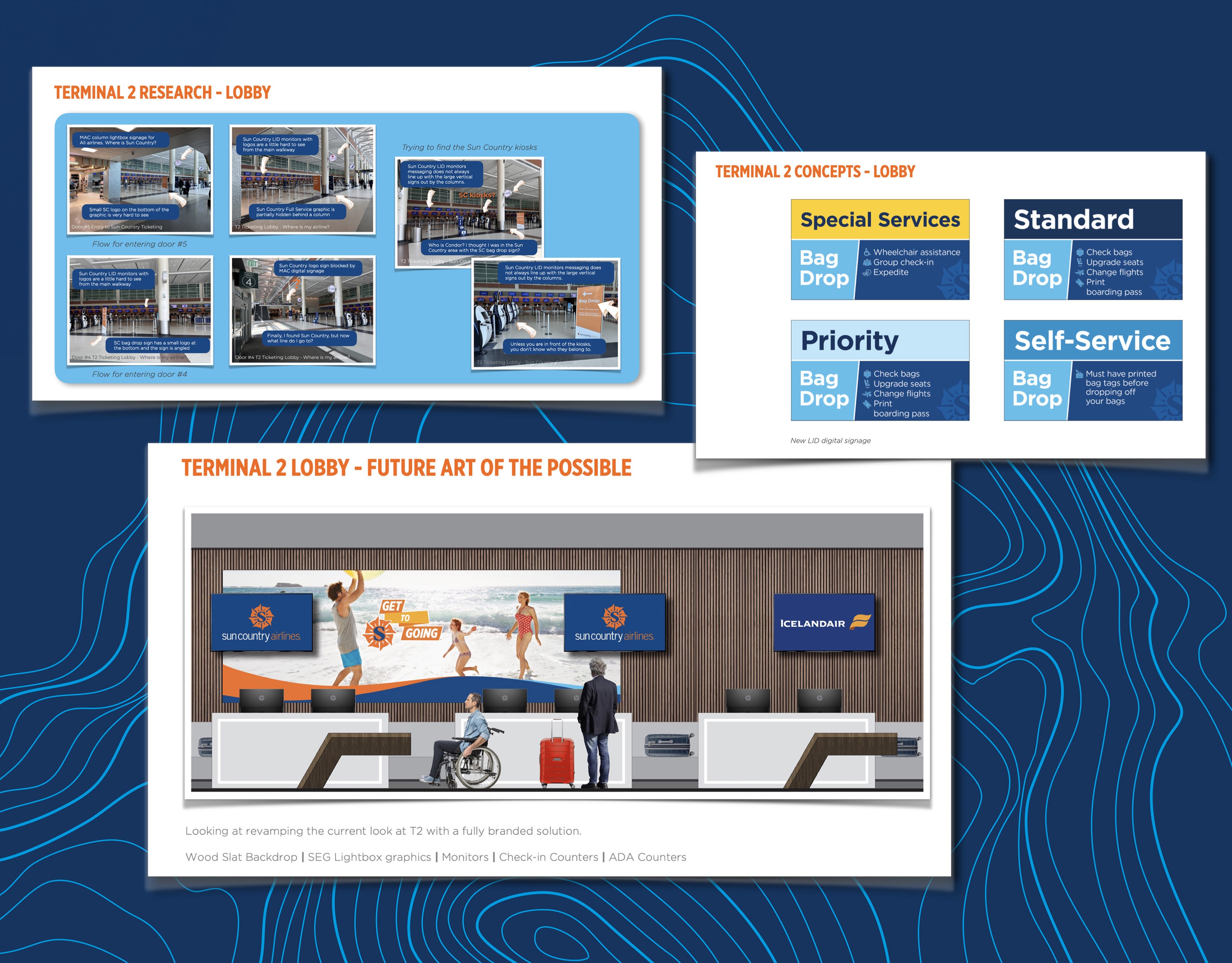Client
Thomson Reuters
My Role
Sr. UX Designer | Team Lead
Location
Eagan, MN
"Get customers to purchase by building a new user experience that shows value by addressing their pain points and needs in 5 clicks or less."
Project Purpose/Overview
Project Imagine aimed to streamline the user experience on thomsonreuters.com by aligning it with customer needs and expectations. The goal was to create efficient pathways for users to discover, learn about, and find relevant products and content, resulting in improved cross-product discovery and conversion. The project followed an iterative approach, highlighting the importance of customer validation, early research, template design, SEO optimization, and leveraging previous successes. All while in close collaboration between design and research teams to quickly implement incremental improvements and arrive at an optimized prototype.
Project Imagine aimed to streamline the user experience on thomsonreuters.com by aligning it with customer needs and expectations. The goal was to create efficient pathways for users to discover, learn about, and find relevant products and content, resulting in improved cross-product discovery and conversion. The project followed an iterative approach, highlighting the importance of customer validation, early research, template design, SEO optimization, and leveraging previous successes. All while in close collaboration between design and research teams to quickly implement incremental improvements and arrive at an optimized prototype.
Design Principles
User task completion is prioritized, avoiding obstacles in the design
Visual and verbal style aligns with TR brand for consistency
Wayfinding is made easy for a strong sense of place
WCAG 2.1 compliance for accessibility
Responsive and component-based design system for adaptability
Content Principles
Use relatable vocabulary for the user
Avoid unnecessary cognitive load
Consistent language usage throughout the ecosystem
Intentional, clear, and simple messaging
The Approach
Discovery began with a series of co-creation sessions with agile groups across the organization. These deep and detailed conversations allowed us to capture their biggest pain points and their most urgent jobs to be done (JTBD). My team then created affinity maps, user journey maps, and service blueprints, and page type outlines to bring Design, Product, Content, and Engineering together in a shared understanding of what would become the MVP. We then looked at best practices in the wild for each of the page types to demonstrate concept directions with typography, imagery, and UI techniques. We were able to quickly jump into wireframing and created prototypes that were tested with customers. The final UI visual comps established the basis of the page types core storytelling strategy and layout for (discipline landing page (DLP), category landing page (CLP), product list page (PLP), product overview page (POP), product detail page (PDP), plans and pricing (PPP)), which was used across the entire TR Digital organization and allowed Design and Development to reuse these components to rapidly build out new capabilities such as Page Types, Containers, Content, Imagery, and Media for all 2000+ pages.
My team and I partnered deeply with the Content and Development teams to map out the parallel creation of dev pages and content so that the handoffs were staggered to keep all groups busy throughout the project. We created a series of user-focused page-type testing sessions while also incorporating AEM A/B tests so that we could garner the best open and click-through rates, in addition to customer feedback on the voice and the tone of the messaging.
Discovery began with a series of co-creation sessions with agile groups across the organization. These deep and detailed conversations allowed us to capture their biggest pain points and their most urgent jobs to be done (JTBD). My team then created affinity maps, user journey maps, and service blueprints, and page type outlines to bring Design, Product, Content, and Engineering together in a shared understanding of what would become the MVP. We then looked at best practices in the wild for each of the page types to demonstrate concept directions with typography, imagery, and UI techniques. We were able to quickly jump into wireframing and created prototypes that were tested with customers. The final UI visual comps established the basis of the page types core storytelling strategy and layout for (discipline landing page (DLP), category landing page (CLP), product list page (PLP), product overview page (POP), product detail page (PDP), plans and pricing (PPP)), which was used across the entire TR Digital organization and allowed Design and Development to reuse these components to rapidly build out new capabilities such as Page Types, Containers, Content, Imagery, and Media for all 2000+ pages.
My team and I partnered deeply with the Content and Development teams to map out the parallel creation of dev pages and content so that the handoffs were staggered to keep all groups busy throughout the project. We created a series of user-focused page-type testing sessions while also incorporating AEM A/B tests so that we could garner the best open and click-through rates, in addition to customer feedback on the voice and the tone of the messaging.
Key Outcomes
Project Imagine was an intuitive and consumer-friendly website experience that helped potential customers understand how Thomson Reuters could solve their problems. The new design focused on simplifying the site and enabling users to quickly access content, make purchases, or seek help and support, with a special emphasis on live chat. The project aimed to increase sales and revenue by allowing customers to purchase through their preferred channel.
Project Imagine was an intuitive and consumer-friendly website experience that helped potential customers understand how Thomson Reuters could solve their problems. The new design focused on simplifying the site and enabling users to quickly access content, make purchases, or seek help and support, with a special emphasis on live chat. The project aimed to increase sales and revenue by allowing customers to purchase through their preferred channel.
Success Measures
Project Imagine improved site conversion rate, driving cross-sell activities, bundling experience, increasing digital sales, upselling, and reducing website update cycle time through data-driven customer experience enhancements.
Project Imagine improved site conversion rate, driving cross-sell activities, bundling experience, increasing digital sales, upselling, and reducing website update cycle time through data-driven customer experience enhancements.
Thomson Reuters created a customer-centric digital journey through Project Imagine, delivering a simplified and optimized website experience that meets or exceeds customer expectations, drove business growth, and improved operational efficiency. In the end, the new tr.com website increased conversion rates by up to 7% and templatization of the new page types improved authoring efficiencies by 25% resulting in faster go-to-market delivery.

